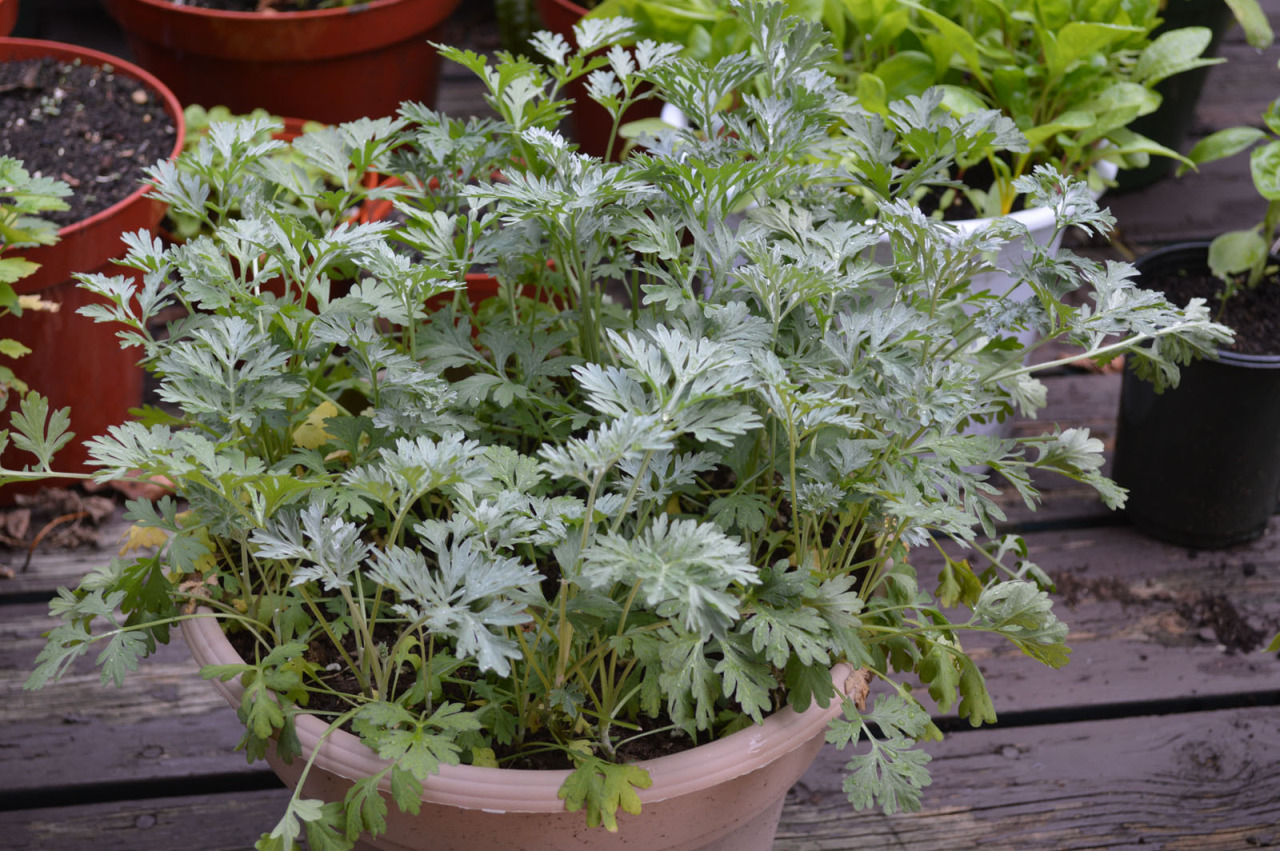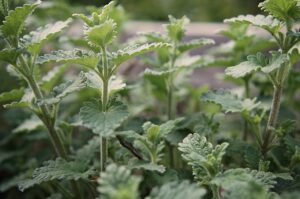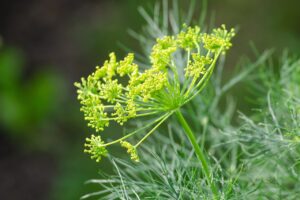Unlock the Potential of Wormwood: A Complete Guide
Wormwood, a perennial herb with a rich history and diverse uses, is a fascinating plant to grow in your garden. This comprehensive guide will teach you how to grow wormwood and provide insight into its many benefits. We’ll also discuss what wormwood is and its various applications, including wormwood tea and wormwood tea benefits. Let’s dive in and explore the captivating world of wormwood cultivation.
What is Wormwood?
Wormwood, scientifically known as Artemisia absinthium, is a perennial herb belonging to the Asteraceae family, native to Europe, Asia, and North Africa. With silvery-green, finely divided leaves and small, yellow flowers, this aromatic plant has a distinctive, bitter taste and a storied history of medicinal use. Wormwood is perhaps most famous for its role as the key ingredient in absinthe, the iconic and once-controversial alcoholic beverage. But what is wormwood beyond its association with absinthe, and what are its properties and uses?
Preparing to Grow Wormwood
Before you begin the process of growing wormwood, it’s essential to gather the necessary supplies and prepare your planting site. I’ve grown wormwood from seed many times, and it’s quite easy. You will need the following:
- Wormwood seeds or seedlings
- Well-draining, slightly alkaline soil
- A sunny or partially shaded location
- Gardening tools (e.g., trowel, watering can, gloves)
Once you have your supplies, prepare your planting site by loosening the soil and adding compost if needed. Wormwood prefers well-draining soil and can tolerate a range of pH levels, though it prefers slightly alkaline conditions.
How to Grow Wormwood: Step-by-Step Guide
Growing wormwood can be a rewarding experience for gardeners. Follow these steps to cultivate wormwood in your garden successfully:
- Sow wormwood seeds or plant seedlings: You can either sow wormwood seeds directly in the ground or start them indoors 6-8 weeks before the last frost. To plant wormwood seeds, sow them shallowly, about 1/8 inch deep. Space seeds or seedlings 12-18 inches apart.
- Water regularly: Keep the soil evenly moist until the seeds germinate, typically 14-21 days. After germination, water the plant as needed to maintain consistently moist soil.
- Provide sunlight: Wormwood thrives in full sun but tolerates partial shade. Ensure your planting site receives at least 6-8 hours of sunlight daily for optimal growth.
- Fertilize occasionally: Wormwood is not a heavy feeder, but you can apply a balanced, slow-release fertilizer in the spring to encourage growth.
- Prune as needed: Prune wormwood in the spring or fall to maintain its shape and size. Remove dead or diseased branches and trim back any overly vigorous growth.
- Monitor for pests and diseases: While wormwood is generally pest-resistant, it may occasionally be affected by aphids, spider mites, or whiteflies. Monitor your plant regularly and treat any infestations promptly with insecticidal soap or a suitable pesticide. Wormwood is also relatively disease-resistant but can be affected by fungal infections, such as powdery mildew or rust. To prevent these diseases, ensure proper air circulation and avoid overwatering.
- Harvest wormwood: Harvest wormwood leaves and flowers in the late spring or early summer, just before the plant blooms. Use sharp scissors or pruning shears to cut the stems and gather them in small bundles. The leaves can be used fresh or dried for various applications, including medicinal and culinary purposes.
Wormwood Benefits: Exploring the Plant’s Potential
Growing wormwood in your garden offers several potential benefits, both medicinal and culinary. Some of the most notable wormwood benefits include:
- Digestive aid: Wormwood has been used traditionally to stimulate appetite and promote digestion. The bitter compounds found in the plant help to increase the production of digestive enzymes and bile, improving overall digestive function.
- Antiparasitic properties: Wormwood has been used for centuries to expel intestinal parasites such as pinworms and roundworms. Its active compounds, including absinthin and artabsin, contribute to its antiparasitic effects.
- Anti-inflammatory effects: Wormwood has demonstrated anti-inflammatory properties, which may help manage conditions such as arthritis, gastrointestinal disorders, and other inflammation-related issues.
- Antimicrobial action: Wormwood exhibits antimicrobial activity against various bacteria and fungi, making it a potential natural remedy for infections.
Potential Wormwood Tea Benefits
I’ve made the tea many times and quite liked it despite the bitterness. One popular way to enjoy the potential benefits of wormwood is by consuming it as tea. Wormwood tea can be made by steeping dried or fresh wormwood leaves in boiling water for 5-10 minutes. The tea has a bitter flavour, which can be tempered with honey or lemon if desired.
Some potential wormwood tea benefits include:
- Improved digestion: Wormwood tea may help stimulate appetite, improve digestion, and alleviate digestive discomfort.
- Parasite removal: Drinking wormwood tea may help eliminate intestinal parasites thanks to its antiparasitic properties.
- Anti-inflammatory effects: The tea may help reduce inflammation and alleviate symptoms associated with inflammatory conditions.
- Immune system support: Wormwood tea may provide a natural boost to the immune system due to its antimicrobial properties.
Safety and Precautions
While wormwood has a long history of medicinal use, it is essential to exercise caution when consuming it. Excessive consumption of wormwood can be toxic, and pregnant or breastfeeding women should avoid using it. Individuals with kidney or liver problems should also refrain from using wormwood. Always consult a healthcare professional before using wormwood or any other herbal supplements, especially if you are taking medications or have pre-existing health conditions.
External Resources: WebMD Wormwood – Uses, Side Effects, and More.
Thujone: Properties and Effects
Thujone is a naturally occurring organic compound found in several plants, most notably wormwood (Artemisia absinthium) and sage (Salvia officinalis). It is a monoterpene ketone and exists in two stereoisomeric forms: α-thujone and β-thujone. Thujone is responsible for wormwood’s characteristic aroma and bitter taste, an essential ingredient in the alcoholic beverage absinthe.
In the past, thujone was believed to be the primary cause of absinthe’s alleged psychoactive effects, leading to the drink’s ban in many countries during the early 20th century. However, modern research has shown that the concentration of thujone in absinthe is relatively low and unlikely to cause any hallucinogenic or mind-altering effects. Today, absinthe is legally available in many countries, with strict regulations on thujone content.
Thujone acts on the central nervous system, where it is a GABA (gamma-aminobutyric acid) receptor antagonist. By blocking GABA’s inhibitory action, thujone can cause muscle contractions and convulsions in high doses. However, the levels of thujone found in absinthe and other wormwood-containing products are typically too low to induce such effects.
In small amounts, thujone has been used in traditional medicine for its antiseptic, antispasmodic, and carminative properties. However, excessive consumption of thujone-containing substances can lead to side effects such as dizziness, nausea, and even seizures in extreme cases.
Wormwood Companion Plants
While wormwood can thrive on its own, it can also benefit from companion planting with other herbs and plants. Here are some of the best companion plants for wormwood.
Companion Plants
- Sage: Sage is a great companion plant for wormwood as it helps to repel pests like moths and beetles. It also has a similar growth habit and can help to shade the soil around the wormwood, preventing weeds from taking root.
- Chamomile: Chamomile is another great companion plant for wormwood. It has similar growing requirements and can help to improve the soil by adding nutrients like potassium and phosphorus. Chamomile also has a calming effect on the nervous system and can help to repel pests like aphids and whiteflies.
- Lavender: Lavender is a great companion plant for wormwood as it attracts pollinators like bees and butterflies. It also has a pleasant aroma that can help mask the wormwood’s strong scent. Lavender also has antibacterial properties and can help to repel pests like moths and fleas.
- Thyme: Thyme is another herb that makes a great companion plant for wormwood. It has similar growing requirements and can help to improve the soil by adding nutrients like iron and calcium. Thyme also has antifungal and antibacterial properties and can help to repel pests like whiteflies and spider mites.
- Nasturtium: Nasturtium is a great companion plant for wormwood as it attracts beneficial insects like ladybugs and lacewings. These insects can help to control pests like aphids and caterpillars. Nasturtium is also peppery and can be used in salads or as a garnish.
While wormwood is a hardy and self-sufficient plant, it can benefit from companion planting with other herbs and plants. Planting these companion plants alongside your wormwood can improve soil health, repel pests, and attract beneficial insects to your garden.
Related Links:
Plants to Avoid
Here are some plants that should be kept away from wormwood:
- Carrots: Carrots are susceptible to a disease called root rot, which can be caused by a fungus that grows in the soil. Wormwood contains compounds that can inhibit the growth of beneficial fungi in the soil, making it more likely that the harmful fungus that causes root rot will thrive.
- Mint: Mint is a vigorous grower and can quickly overtake other plants in the garden. Wormwood has a slow-growing habit and may be overshadowed by the mint, leading to stunted growth and reduced yields.
- Fennel: Fennel is a member of the same family as wormwood, and planting them together can increase the risk of cross-contamination and the spread of diseases.
- Anise: Anise is another plant that belongs to the same family as wormwood; planting them together can lead to cross-contamination and the spread of diseases.
- Cilantro: Cilantro is a herb that is often used in Mexican and Asian cuisine. It has a growth habit similar to wormwood and can compete for resources like water and nutrients, reducing yields for both plants.
By avoiding these plants when planting near wormwood, you can help to ensure that your garden is healthy and productive.
Conclusion
Growing wormwood from seed is a simple and rewarding process that can provide you with a steady supply of this versatile herb. By following these steps on how to grow wormwood, you will learn to grow them successfully in your garden, containers or balcony. Remember to choose a sunny location with well-draining soil, keep the soil moist but not waterlogged, and prune the plants regularly to keep them compact and bushy. With a little care and attention, your wormwood plants will thrive and provide you with a bounty of leaves and stems for use in herbal remedies, culinary dishes, and decorative arrangements.






